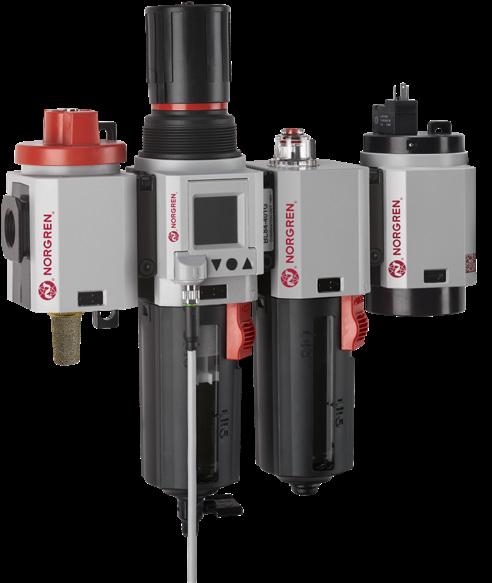
2 minute read
Data collection
Collecting data from pneumatic circuits
Within the realm of IIoT technology, exactly what kind of data can pneumatic devices generate, and how can they be used? Traditional pneumatic systems can function perfectly well without connectivity. However, they do not give engineers much detailed insight about their activities. Modern, connected systems, on the other hand, can provide useful data about various aspects of the pneumatic circuit, and how it is functioning. There are several kinds of data that can be collected. For instance, in the case of an IO-Link connection, there are four basic data types available: (1) process data, which refers to the latest state of a connected device; (2) value status, which indicates the validity of the process data; (3) device data, which includes device parameters and diagnostic information; and (4) event data, which is information such as error messages, warnings and maintenance data.* Additionally, connecting different elements of the pneumatic circuit can provide different information. In order to gather data as part of a connected circuit, a part must be able to support a smart digital connection. Each component of the circuit, as long as it is compatible with smart technology, offers something valuable to learn:
* https://io-link.com/share/Downloads/At-a-glance/IO-Link_System_Description_eng_2018.pdf
Filter/RegulatorLubricator Combination
At the start of the circuit is air preparation, or the filter regulator lubricator (FRL). Sensors can gather information about the secondary pressure, which is the pressure of the compressed air that the FRL produces as output. If the pressure is lower than it should be, that can be an indicator that there is something going wrong in the FRL – for example, the filter may be clogged and needs to be replaced.
Actuator Switches
At the business end of the circuit, actuator switches can detect the position of the piston to keep an accurate cycle count. That cycle count can be used to monitor productivity, and to determine the estimated life of the component, so that manufacturers can predict when the actuator will need to be repaired or replaced. It is also possible to monitor local temperature of the actuator. This can tell you if the actuator is generating too much heat and could fail prematurely or if the temperature in the immediate area may cause quality issues in your application.
Valve Manifold
For this component, in addition to controlling the valve operation, a variety of data can be gathered. For example: cycle count, voltage and short circuit diagnostics, temperature warnings, and communication error. Each of these data points can be used to diagnose the health of the valve.
Sensors
Additionally, sensors built into a pneumatic circuit can monitor the operating pressure of the system to identify leaks, or monitor temperature levels, which is critical for ensuring optimal productivity.

Input/Output Blocks and IO-Link Master
Analogue devices can also be connected to a digital network to provide information. Input/output (I/O) blocks can translate input and output from an analogue device into data. These can be connected to an IO-Link master, which, in turn, acts as a gateway, so that enabled devices – such as sensors and valves, and I/O blocks translating for an analogue device – can connect to an Ethernet system.




